Author:
Mike Lee
Photographers:
Mike Skube and Mike Lee
A Fast Electric entry level pylon plane
AT A GLANCE
MANUFACTURER: E-flite RC
DISTRIBUTOR: Horizon Hobby
TYPE: Sport or pylon racing electric ARF
FOR: Advanced and Intermediate pilots for fast club pylon racing.
NEEDED TO COMPLETE: 4+ channel radio system, 2 micro servos, 2 mini servos, Motor, ESC, Flight battery, Propeller, Spinner
PRICE: $150
INTRO
Whether you want a great looking race type model for sport flying, or you want to take on the challenges of pylon racing, the E-Flite Shoestring is a great way to go! The looks and styling of the Shoestring is modern by anyone’s standards, and when you experience the solid handling of this model, you can’t help but to feel the adrenaline rush of flying a race plane. There is plenty of power available whether you set it up with the sport Power 15 motor or the rip snorting Power 25 motor, allowing you to perform any of the basic aerobatic maneuvers with ease. I like the way the cowling and wing halves blend with the fuselage for a truly clean aerodynamic look. To me, this plane screams excitement.
About EF-1 Racing
EF-1 racing is an entry level class of high performance pylon racing, now becoming very active across the country. With regulations set on the aircraft dimensions and styles, plus an approval standard for motors and batteries, the class makes for aircraft that are very equal in performance and speed. With that, the racing becomes a race of piloting skills, and that results in the development of very skilled pilots who will be ready for faster and even more racing in the upper classes. EF-1 racing also takes a lot of the technical aspects out of the picture. Being electric powered, the pilot no longer has to worry about the fine tuning of a fuel fed engine, glow plugs, starter, and anything else related to the feeding of an engine. In this class, you need only to plug in the main battery and turn on the model. And although this sounds too simple to go fast, don’t worry; EF-1 class aircraft routinely fly at speed over 110-MPH! Believe me, on a pylon racing course, this is plenty fast!
ASSEMBLY
The Shoestring includes a very well done instruction manual, with plenty of photos to help you along. With that, the assembly goes very rapidly. My first note deals with the landing gear. Here we find the use of molded plastic landing gear fairings placed at the root of the gear strut. Cut the fairing along the mold lines and the result is a very aerodynamic looking landing gear strut. Take your time here and the fit will be perfect. I used Zap Goo adhesive to attach the fairings. If you have never tried this product, it is a “must-have” item!
The landing gear struts are finished off by the wheels and wheel pants and from there, we go to the wings. Here, we find the ailerons are already hinged, but not glued permanently. The hinges are CA type hinges, and after insuring that everything is properly aligned, you can apply the CA. My choice of CA is Zap CA, thin viscosity.
Once the ailerons are set, you can install your aileron servos. Because the Shoestring uses a two-piece wing, you will need two aileron servos. I installed JR DS388 thin wing servos into this position because of their strength, speed and low profile. They are a great match for this plane. The servos are attached to the servo bay cover, making it convenient to service the servo, should you need to. Note that you will need a short servo wire extension to allow the wire to reach the receiver inside the fuselage.
We now move to the tail feathers where the elevator halves are hinges and joined to the horizontal stab. Note that once the hinging is done, you must remove some of the film covering on the very center of the stab in preparation for gluing to the fuselage. Once the stab is prepped, the wings are mounted to the fuselage. An aluminum tube is the main joiner and spar for the wings, and each wing half fits into a recess in the fuselage for a clean fit. Once the wings are mated, the stab can be aligned and epoxied to the tail. After allowing the epoxy to completely cure, the vertical stab and rudder is added to the tail. Take your time and get the alignment right, as this really affects the handling of the plane in flight, especially in racing planes.
To motivate the rudder and elevator, we installed JR Sport MN48 servos. These feature the speed and strength needed to pull high-stress turns seen in pylon racing. They are also a perfect fit to the servo tray. A Spektrum AR6210X receiver with one remote receiver was installed to call signals to the servos, and this was mated to my JR 11X transmitter using the DSM-X transmission system. The radio link proved to be solid!
Going back to the nose, we fitted up an E-Flite Power 25 1250Kv outrunner motor to the firewall, using the kit supplied hardware and motor spacers. Note that you can make this a sport flying model as well, using an E-Flite Power 15 motor. The kit provides hardware to set up this motor as well. Our energy requirements were handled by an E-Flite 60A Pro Switch Mode BEC ESC, and that fits right below the battery tray section, where there is plenty of space for air circulation.
With the motor and electronics in place, we mount the cowl, and this is a very snug fit. But first, remove the canopy by sliding it forward and then upward from the rear of the canopy. Pay attention to this tip for a trouble-free canopy install. First, fit and install the cowling. It’s snug and you have to work it a bit, but the result is worth it. Make sure it aligns with the spinner ring. Now, if you try to install the canopy, you will find it won’t fit because the front edge of the canopy is too long. Not to worry. Carefully trim the front edge of the canopy back by about 1/8 inch and along with that, round off the lower corners. Now, under the rear of the canopy is two plywood latch hooks. Trim the back edge of the latch hooks to shorten them by about 1/8 inch as well. By trimming these two areas, you should just be able to attach the canopy correctly for a snug fit.
At this point, we have a pylon racer that is just about ready. For all out racing, the Shoestring is designed to use a 4S 2500mAh LiPo pack, and in our case, an E-Flite 30C pack was the ticket. With this pack at the rear of the battery tray, the balance was right where the instructions called for it to be. After a complete control check and range test, the Shoestring was ready to fly!
For those pilots who are wondering whether to choose the Shoestring over its’ sibling, the Pogo or any other EF-1 racer, you probably want me to provide a comparison. I can only compare the Shoestring to the E-Flite Pogo, as I have not flown any other production EF-1 models.
On the pylon course, the Shoestring feels like it retains better energy around the pylon while pulling back hard on the elevator. It is better behaved through the turn, being steady and stable without any tipping. I do think the Pogo accelerates quicker, as I tried punching the throttle from half throttle to full on both planes for comparison. Take off and landing feels easier with the Shoestring, and I believe the Shoestring comes in a bit slower. You still have to mind the landing on both models, as they require a good, “greased” landing to prevent landing bounce. If I had to make a decision on which one I prefer to race with? I would fly the Shoestring, as the better handling in the turns allows me to fly more and worry less. Like the full scale original, I think this one will be a classic!
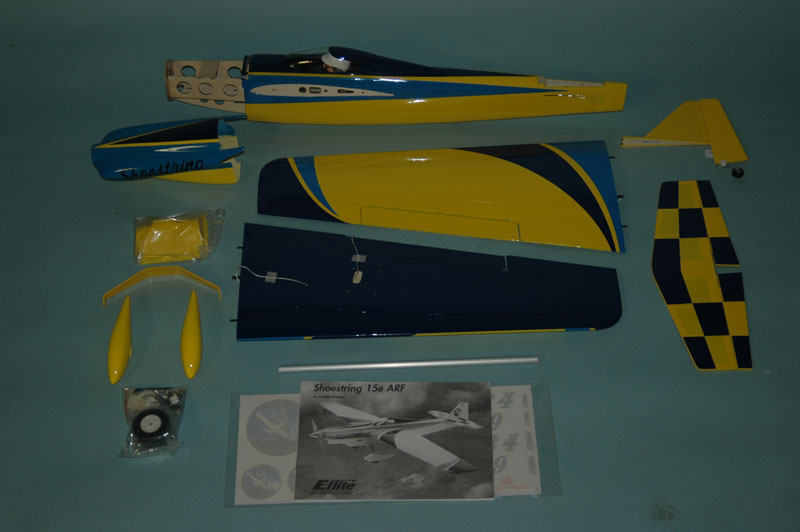 |
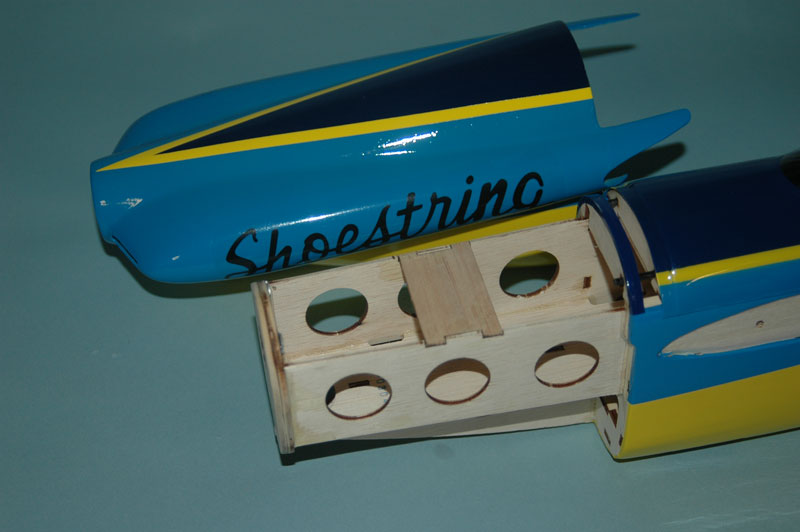 |
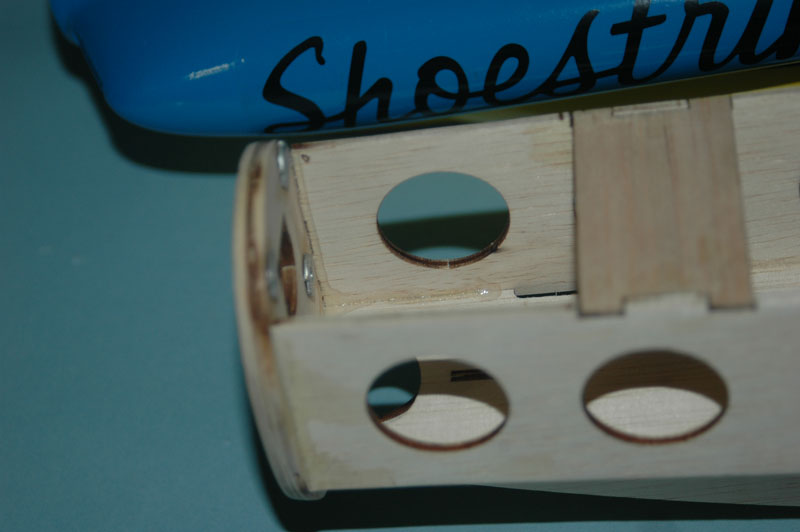 |
| Kit contents and components shot | Here we see the motor mount area and fiberglass cowl. | It’s all made from aircraft ply, making it strong. |
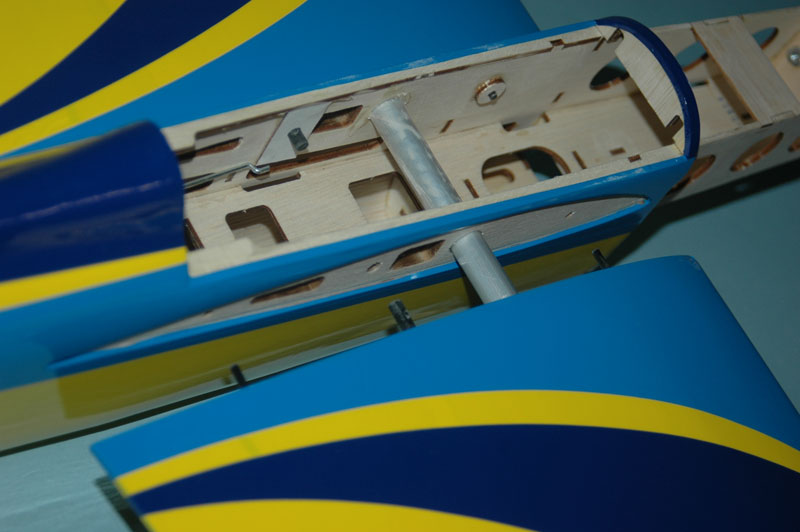 |
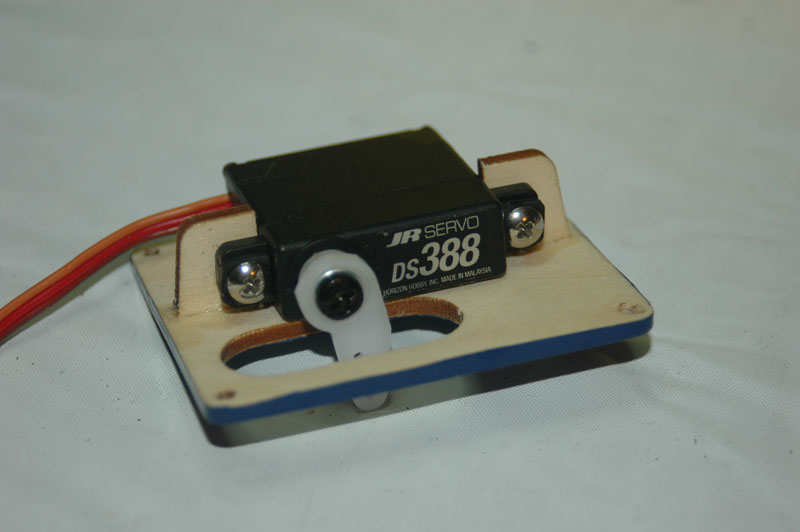 |
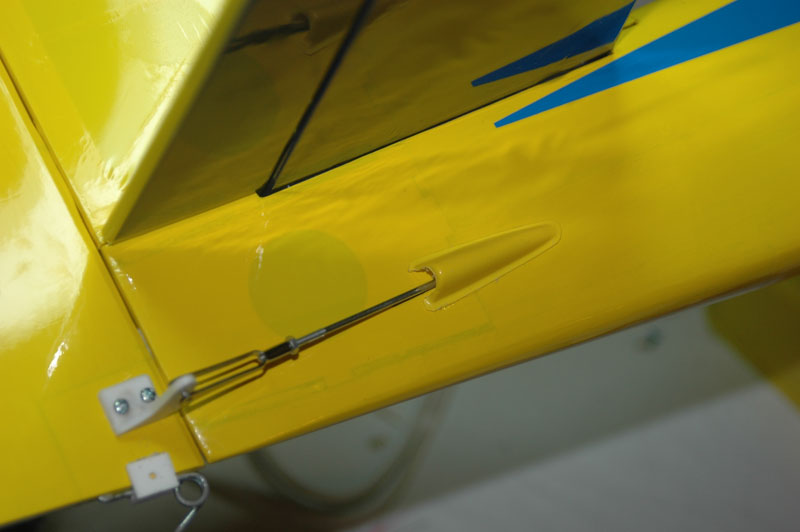 |
| A view of the cockpit area shows the fiberglass wing joiner tube and wing mounts. It may look small, but everything fits nicely. | A JR DS388 wing servo is mounted to the frame of the wing servo bay cover. Note the profile, which easily fits into the thin wing of the Shoestring. | At the tail, we find plastic aero covers to smooth the airflow around the pushrod exits. Nice touch. |
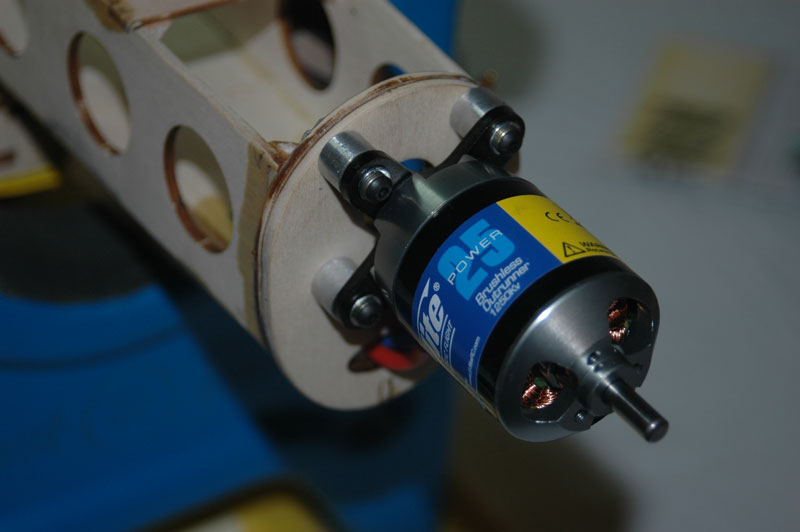 |
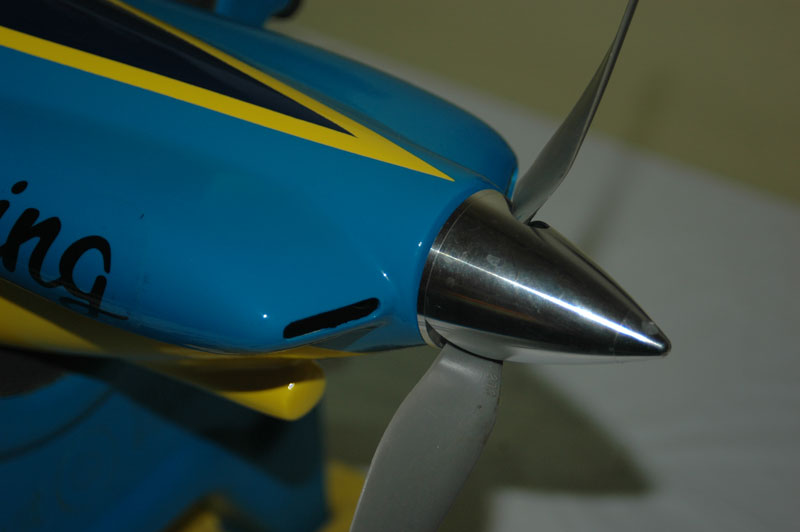 |
|
| Our E-Flite Power 25 motor is mounted to the firewall and ready to run. The aluminum stand-offs are included in the hardware kit. | Fitted with the optional 1.5 inch aluminum spinner, the nose looks awesome! |
 Fly RC Magazine WE LIVE RC
Fly RC Magazine WE LIVE RC
